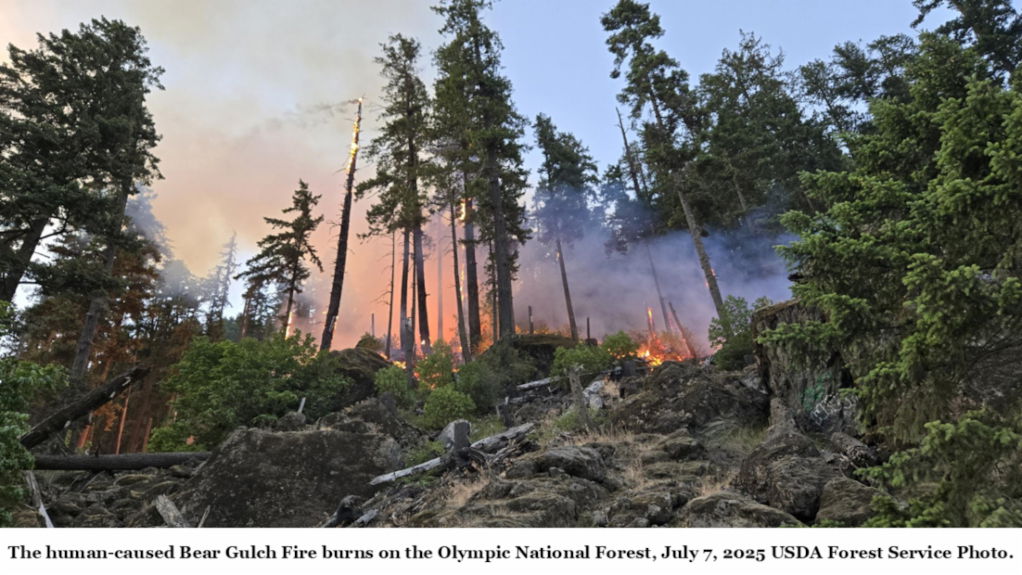Hot, dry weather prompts Forest Service to increase public use restrictions, fire danger levels on national forests

Barney Lerten
PORTLAND, Ore. (KTVZ) — Due to July’s persistent hot and dry weather, national forests across the Pacific Northwest increased or implemented public use restrictions last week.
Through these public use restrictions, as well as high to very high fire danger levels, firefighters are urging the public to be vigilant in preventing human-caused wildfires when recreating outdoors.
Current public use restrictions can be found on national forest webpages or by checking at the local ranger district before recreating in an area. Even if campfires are allowed, please consider whether having a fire is necessary. For information on campfire safety, visit: https://smokeybear.com/en/prevention-how-tos/campfire-safety.
Here are a few tips to keep yourself, your family, and communities safe as fire season ramps up in the Pacific Northwest:
Stay vigilant if wildfires are burning in your area or near your community.
Know that conditions may change quickly.
Adhere to local fire restrictions.
Sign up for emergency alerts with your local county.
Become familiar with the three evacuation levels.
Know where to find up-to-date evacuation information for your area.
Make a plan to keep your family safe.
To prepare for smoke from current or future wildfires, here are some helpful links:
Smoke-Ready Toolbox for Wildfires | US EPA.
Though early this week, some areas of the Pacific Northwest will experience cooler temperatures than normal, fire danger levels will stay high to very high because already dried fuels will remain susceptible to ignition sources. In addition, warmer, drier conditions will quickly return to the Pacific Northwest, increasing the potential for wildfires across Oregon and Washington.
Currently, there are seven large wildfires burning on national forest lands in the Pacific Northwest. Firefighters and aviation resources are ready to respond to growth on these existing fires as well as engage in quick and risk-informed action on any new fire starts.
Resources, including USDA Forest Service firefighters and incident management teams, continue to be prepositioned in the Region to support aggressive suppression response.
For more news and information about national forests in the Pacific Northwest, visit our news page at https://www.fs.usda.gov/r06/newsroom/releases or our home page, at https://www.fs.usda.gov/r06. For more information about the USDA Forest Service, visit https://www.fs.usda.gov.